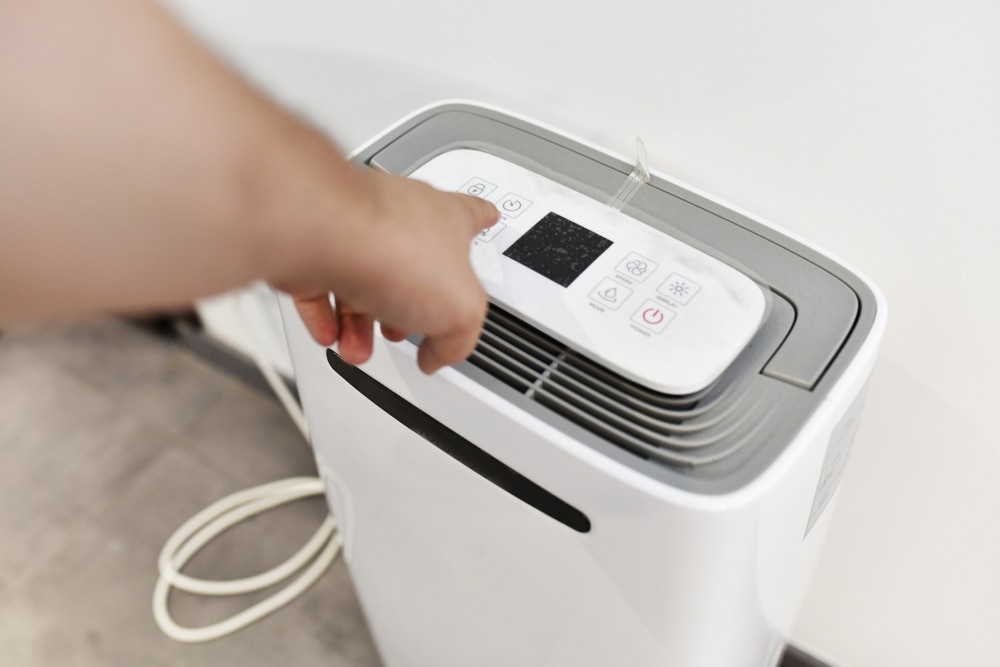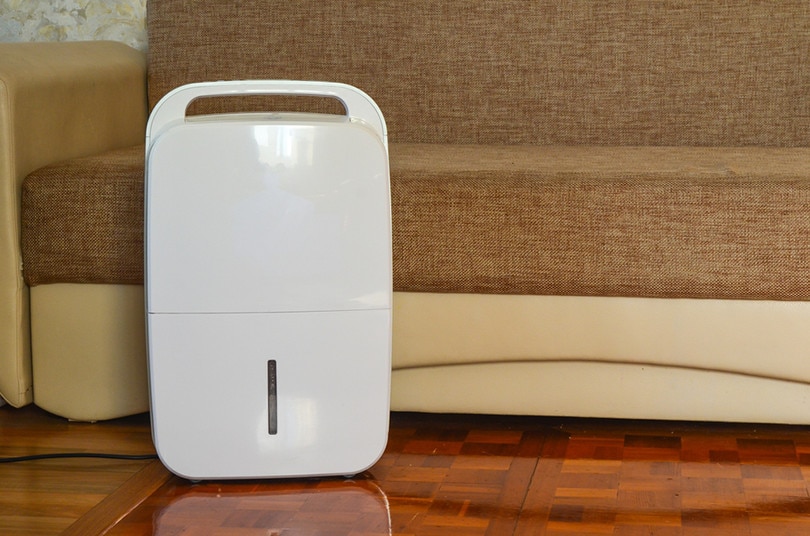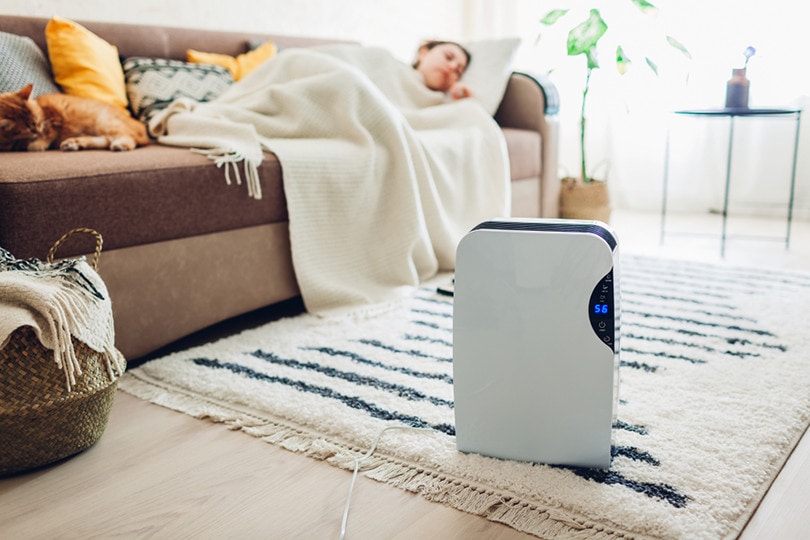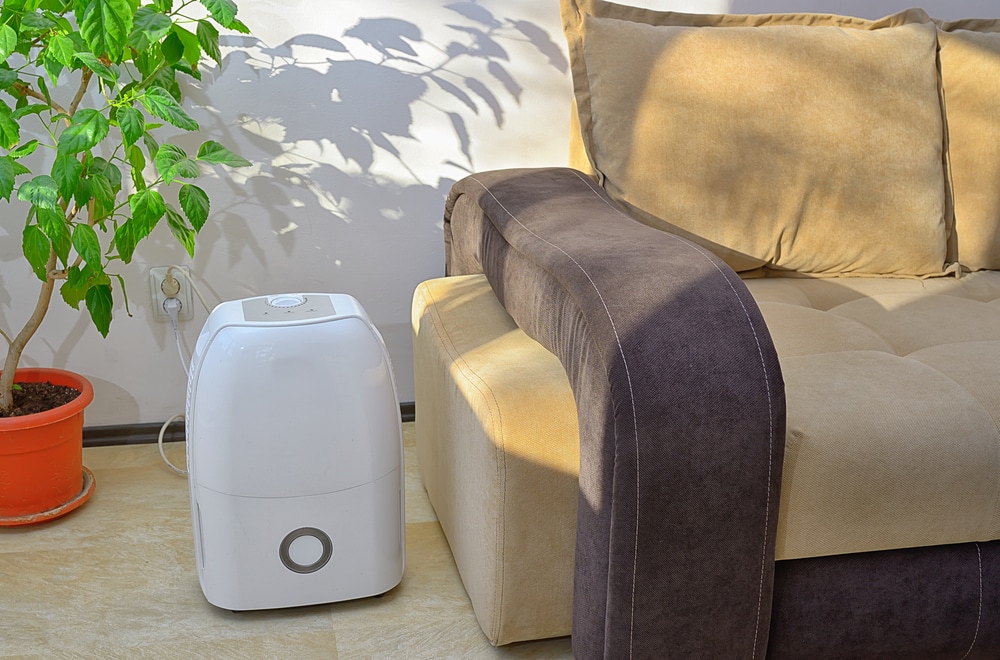How Does a Dehumidifier Work? The Impressive Answer!
-
Greg Iacono
- Last updated:

A dehumidifier can be a blessing for millions of people who suffer from allergies. Dehumidifiers remove moisture from the air and are often used in damp areas of a home, like basements, to prevent mold and mildew from forming.
An easy way to understand how a dehumidifier works is to think of it like a vacuum cleaner. Instead of sucking up dirt and debris, however, a dehumidifier sucks in humid air and blows out drier air.
You’ll frequently find dehumidifiers in areas of the United States with high humidity, such as Florida, Mississippi, Louisiana, and South Carolina. Dehumidifiers help reduce dust mites and other pests, prevent musty odors, and even lower overall energy costs. Read on if you’re curious about how dehumidifiers work, their advantages and disadvantages, and frequently asked questions about this helpful device.
Types of Dehumidifier
There are two main types of dehumidifiers: refrigeration dehumidifiers and absorption dehumidifiers. Both devices do the same thing, removing moisture from the air, but in different ways.

Refrigeration Dehumidifiers
A refrigeration dehumidifier sucks in warm, moist air through its intake using a fan to suck rather than blow. As this happens, the warm, moist air being sucked into the machine is passed over pipes that have been cooled, similar to a refrigerator. This part is key, as cold air can’t retain moisture as well as hot air. The moisture in the air, when cooled, turns from a vapor into a liquid (water).
The dry air is then heated back to room temperature and, using another fan, blown back into the room where it’s being used. Meanwhile, the water that was sucked out of the air collects in a large bucket in the dehumidifier. That water must be dumped occasionally when the bucket is full, although some dehumidifiers have a drainage hose instead and drain automatically.
Absorption Dehumidifiers
Absorption (and adsorption) dehumidifiers work by soaking up moisture in the air using a material that absorbs water. Like refrigeration dehumidifiers, absorption dehumidifiers first suck moist air into their intake. As this happens, the humid air moves past a constantly rotating wheel with absorbent material attached to it.
As the air enters, the moisture is pulled out, like using a sponge to clean up water spilled on a countertop. The dry air is then blown back into the room while the now-wet rotating wheel and absorbent material are rotated over a heated space in the dehumidifier to dry out and repeat the process.

What Are the Different Types of Dehumidifiers?
There is a third type of dehumidifier called an adsorption dehumidifier (aka a desiccant dehumidifier). This type is similar to an absorption dehumidifier except that, instead of the water being sucked into an absorbent material (like a sponge), the water molecules are pulled onto the surface of a material 1, much like a magnet is pulled towards a metal surface. Once the water has adhered to the surface, it is dried using some of the dry air that’s been recirculated. Adsorption dehumidifiers are typically used in large, warehouse-like settings.
Refrigerant Dehumidifier
Moist air is cooled to a low temperature, and the moisture vapor turns to water. The water is removed or drained off.
Absorption Dehumidifier
Moist air is blown past an absorbing material that removes the water like a sponge. The water in the sponge is then dried, and the sponge is used again.
Adsorption (Desiccant) Dehumidifier
Moist air moves past a material that attracts water like a magnet to metal. The water is then dried off the material using recirculated dry air, and the material is ready to adsorb more.
Where Is It Used?
Dehumidifiers are used in various locations and settings for several reasons. Some people know about dehumidifiers from seeing them used in a damp location, like a basement. However, dehumidifiers are helpful for much more than that.
Dehumidifiers Keep Precious Items Dry
If you have an extensive library of books, many photo albums from your life and travels, or antiques and collectibles, you know that moisture is the bane of their existence and can ruin them if left unchecked. A dehumidifier is essential to keep these fragile and precious items dry.
Dehumidifiers Make Life More Pleasant in Humid Areas
A dehumidifier can make life in a humid climate much more livable, especially if there’s no air conditioning available.
Dehumidifiers Help People With Allergies
Humid air is great if you’re a germ, virus, microbe, dust mite, or bacteria, and it is where mold finds its “happy place.” Many people with allergies use a dehumidifier for exactly this reason. In clinical testing, dehumidifiers have been found to offer a minimal amount of help to asthma patients.

Advantages of Dehumidifiers
- Remove moisture from the air
- Protect items that are prone to moisture damage
- Prevent the growth of mold, bacteria, germs, microbes, dust mites, and other unhealthy allergens
- Protect your home from damage due to moisture in the air
- Make it easier to breathe
- Cool off your home and reduce energy bills
- Reduces dust in the air
- Will help your AC unit run more efficiently
- Reduces odors caused by mold and mildew
- Reduces certain insects attracted to warm, moist areas
Disadvantages of Dehumidifiers
- Can cause conditions like pneumonia to worsen
- Can dry out your skin and hair
- Can increase the symptoms of eczema
- Can worsen a dry cough or stuffy nose when you have a cold
- When running can cause an annoyingly loud noise
- Might need to dump the water tank and change the air filter often (on some models)
- Can increase the temperature of a room
- Relatively expensive home appliance
- Can increase your electric bill

Frequently Asked Questions (FAQs)
What Does a Dehumidifier Do?
Dehumidifiers remove moisture from the surrounding air, making it drier and healthier to breathe and protecting items prone to moisture damage.
Where Does the Water in the Air Come From?
There is always water in the form of vapor (humidity) in the air around us. Water can come from living in a humid climate, showering, fish tanks, cooking, and even breathing.
Can the Water Collected in a Dehumidifier Be Used for Anything?
The water collected in a refrigerant dehumidifier can water your plants. However, you shouldn’t drink the water as it could contain toxic substances.
Do All Dehumidifiers Need to Be Emptied?
Refrigerant dehumidifiers that don’t have a drain plug and hose attachment need to be emptied often. Machines with a drain plug (i.e., continuous drainage) and absorption and adsorption dehumidifiers do not need to be emptied.
How Do Dehumidifiers Prevent the Growth of Mold?
Mold needs moisture to live, grow and replicate. A dehumidifier dries out the air to the point where it’s impossible for mold to survive.
Which Size Dehumidifier Do I Need?
Typically, a 30-pint dehumidifier is best in a 500 to 1,500-square-foot space. From 2,000 to 2,500 square feet, a 50-pint dehumidifier is best. If the room (or home) is 2,500 to 3,500 square feet, a 70-pint dehumidifier is probably best.
A Quick Reference Guide
| Refrigerant Dehumidifier | Absorption Dehumidifier |
Adsorption (Desiccant) Dehumidifier
|
|
| Cools moist air to remove water | Yes | No | No |
| Sucks up water in the air like a sponge | No | Yes | No |
| Attracts water in the air like a magnet | No | No | Yes |
| Needs to be drained | Yes (Sometimes) | No | No |
| Is rather noisy | Yes | Yes | Yes |
| Uses refrigerant | Yes | No | No |
| Cost to run | Cheapest | More expensive | Most expensive |
| Suitable for home use? | Yes | Yes | Not usually |
Final Thoughts
Dehumidifiers remove moisture from the air, thus making it drier and, for some people, healthier. Dry air is also better for antiques, books, and other items subject to damage from moisture. Dehumidifiers have some drawbacks, especially the noise and energy consumption, but in most cases, a dehumidifier offers more advantages than disadvantages. In many situations, a dehumidifier is a blessing that makes life more livable and protects your precious belongings from water damage.
Featured Image Credit: Patricia Perez R, Shutterstock
Contents

